“The situation is very tense! The actions of the partisans are increasing unbearably "
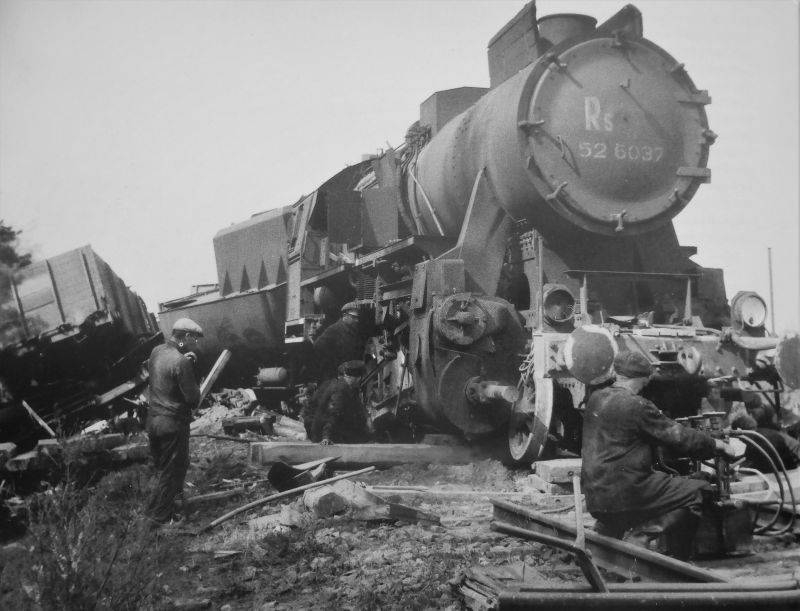
A German steam locomotive and carriages blown up by Soviet partisans in Lithuania. 1943 g.
1943 entered history The Great Patriotic War, not only with victories at Stalingrad and Kursk, but also as a year of massive attacks by Soviet partisans on the rear infrastructure of the Wehrmacht. Partisan detachments actively carried out major operations on enemy communications - "Rail War" and "Concert".
"Concert" is the code name for the operation that the partisans conducted from September 19 to the end of October 1943, a continuation of Operation Railroad War.
"Rail War"
During preparations for the decisive summer battle of 1943 in order to defeat the advancing forces of the German army, intercept the strategic initiative and the transition of the Red Army to a counteroffensive, numerous partisan detachments had to divert part of the enemy's forces and reserves in the rear, disrupt enemy communications, troops and military cargo. The central headquarters of the partisan movement under the leadership of Panteleimon Ponomarenko attracted more than 160 brigades and detachments to the operation in the Leningrad region, Belarus, Ukraine, Smolensk region, Oryol region, etc.
In July 1943, the Soviet Headquarters gave the order to carry out the operation.
Each partisan detachment received its own task. The partisan formations were reinforced with demolition specialists, they sent explosives and the appropriate equipment. The partisans also received additional weapon and ammunition.
The operation began on August 3, 1943, and was attended by about 100 thousand soldiers.
Partisan brigades and detachments operated in the rear of Army Groups North, Center, and South (to a depth of 750 kilometers). On the first night alone, Soviet partisans blew up 43 rails.
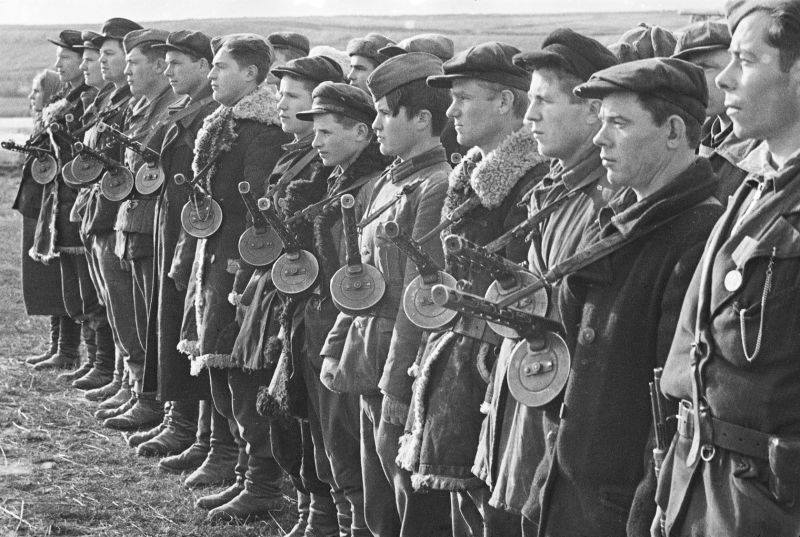
Formation of partisans of the 3rd battalion of the 2nd Kletnyansky partisan brigade before a raid behind enemy lines. 1943 g.
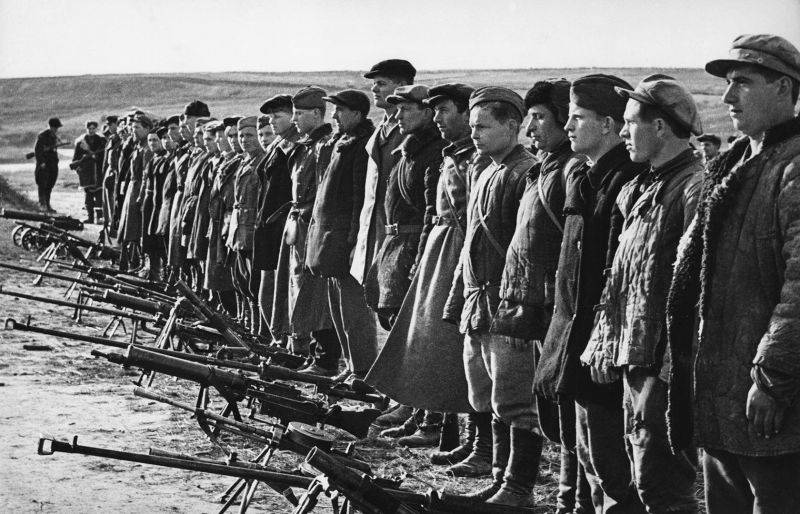
Formation of a partisan detachment before a raid behind enemy lines in the Bryansk region
The operation lasted until mid-September 1943.
The partisans blew up more than 200 thousand rails, destroyed a large number of echelons (only the partisans of Belarus - over 800), blew up bridges and other structures.
Especially great destruction was carried out on the railways of Belarus. By the fall, the operational transport of the fascists had decreased by 40%. On some roads, traffic was stopped from 3-15 days to a month (August). The German command had to strengthen the protection of communications, to attract additional locomotives and carriages (supply of rails and other materials) for the repair of railways, and to transfer materiel from Poland and Germany. In some places, double-track tracks were converted into single-track tracks, separate sections were dismantled, etc.
Thus, the Wehrmacht's ability to maneuver and supply deteriorated.
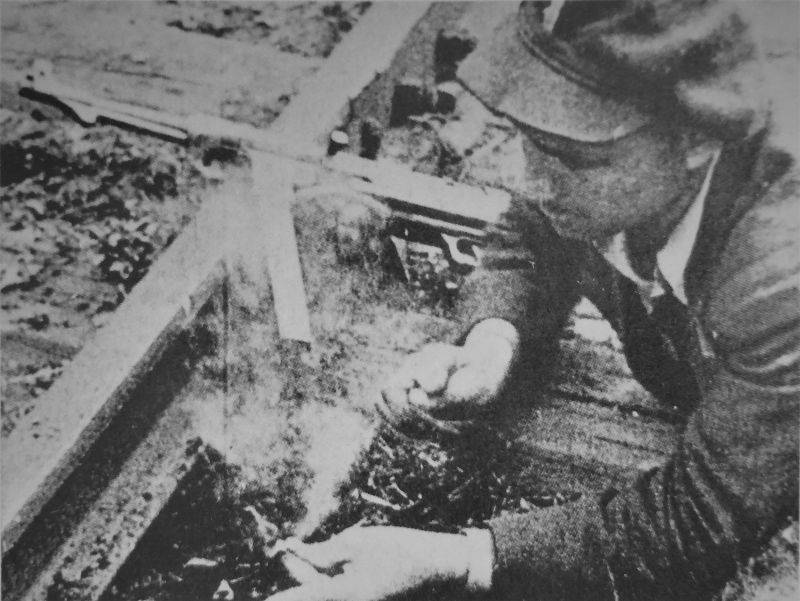
A Soviet partisan undermines a section of the railway. Newsreel frame. Presumably 1943
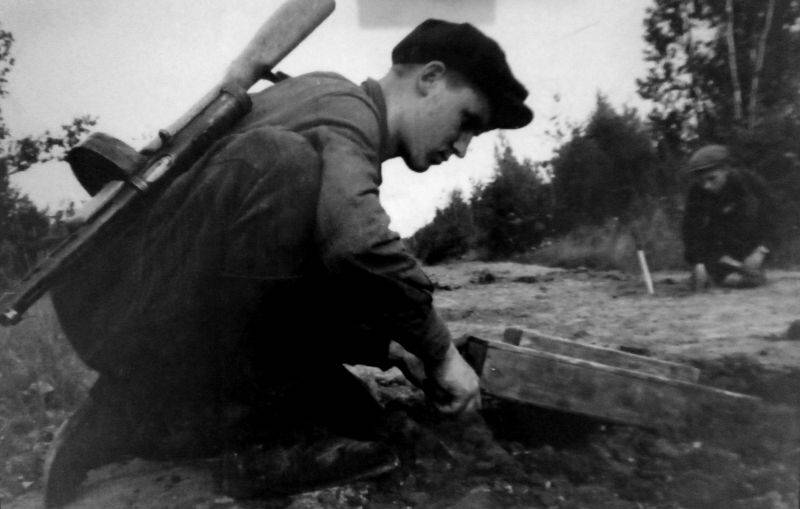
Soviet partisans mine a road in the Leningrad Region. 1943 g.
Preparing a new operation
The Soviet command assessed the outcome of the "Rail War" positively.
It was decided to continue in the same spirit. At this time, the Red Army liberated the Oryol, Smolensk regions, the Left-Bank Ukraine, and began the battle for the Dnieper. It was necessary to strike the enemy from the rear in order to facilitate the offensive of the Soviet armies.
Ponomarenko in early September 1943 approved the plan for Operation Concert.
The target was the railroad tracks behind enemy lines. Each partisan detachment received its own mission, which included blowing up rails, trains, road structures and other logistic infrastructure.
More than 190 brigades and detachments, about 120 thousand people, were involved in the operation.
The operation was attended by partisans of the Leningrad region, Smolensk region, the Baltic states, Belarus and Ukraine. But the main role was played by the fighters of the partisan region - White Russia (more than 90 thousand people). Thus, it was planned to transfer 120 tons of explosives and other cargo to the Belarusian partisans, and 20 tons to the Kalinin and Leningrad partisans. The front was about 900 km long and 400 km deep.
The operation was closely connected with the upcoming offensive of the Soviet armies in the Smolensk and Gomel directions and the battle for the Dnieper.
Mass training of partisans in subversive work was organized, the delivery of military cargo to the location of partisan formations.
The start of the operation was scheduled for September 19, 1943.
However, due to unfavorable weather conditions, at the beginning of the operation aviation only half of the military cargo was transported. Therefore, the start of large-scale events was postponed to September 25. But part of the partisan units, which had already reached the lines of the attack, began the operation according to the original plan - on September 19. So, partisans in Belarus blew up about 19 thousand rails on the night of September 20.
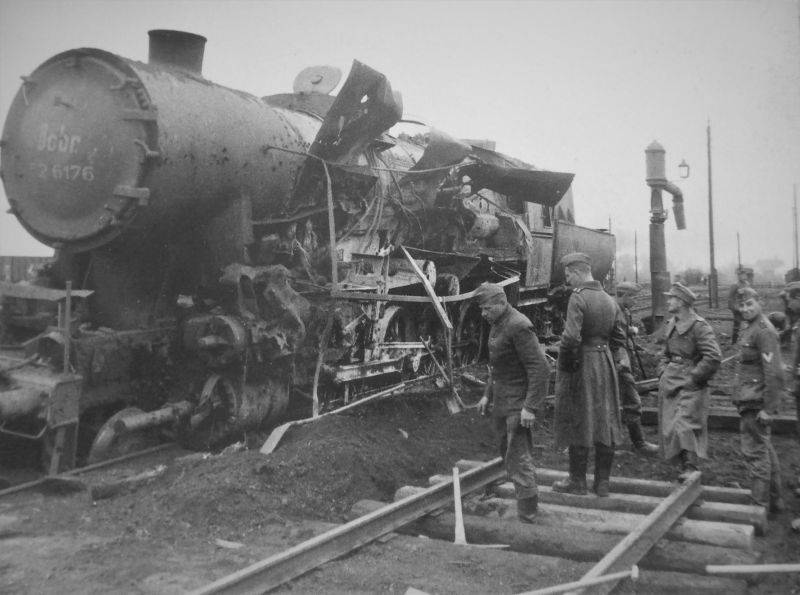
German soldiers at a steam locomotive damaged as a result of the bombing of the railway by Soviet partisans at the Znamenka station of the Kirovograd region. October 1943
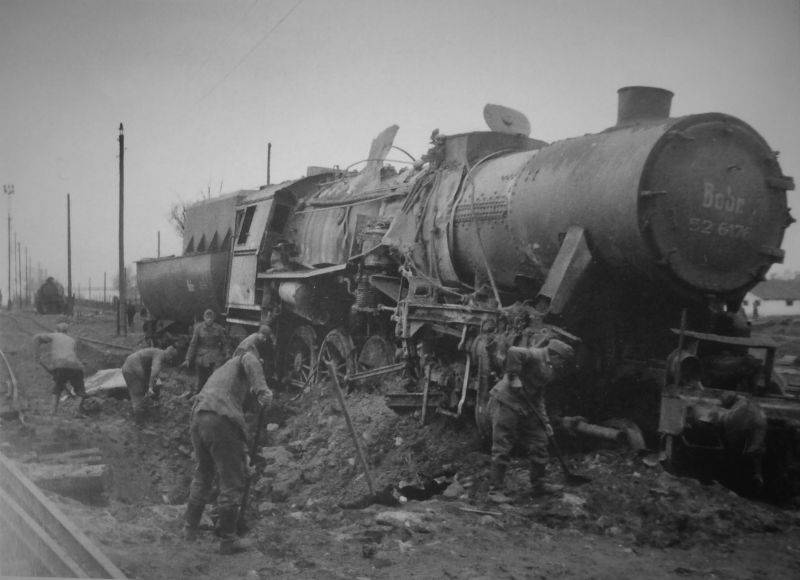
German soldiers fill up a crater that arose after the railway was blown up by Soviet partisans, next to a 52-series steam locomotive at the Znamenka station of the Kirovograd region (Ukraine)
"Concert"
The attack of the Belarusian partisans was so large-scale that already at 6 o'clock in the morning on September 19, 1943, the leadership of the German railways in Minsk anxiously announced:
On September 25, the main forces of the partisans began to operate. They attacked railroad guards, seized railroad tracks, destroyed and mined rails. In Belarus, over 15 thousand more rails were destroyed that night. The German command had to take emergency measures to strengthen road protection and restore them. Railway battalions and even units from the front were transferred from Germany. The local population was rounded up for restoration work.
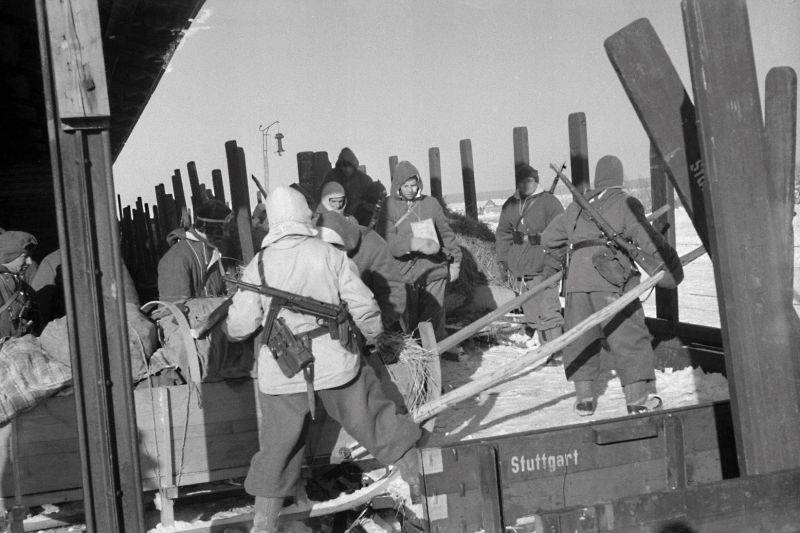
Loading sledges and equipment of the German yagdkommando on railway platforms at the Deryugino station.
Jagdkommando (Jagdkommando, Zerstörungskommando) - a special unit of the Wehrmacht of 50-80 people, intended to fight the partisans. 1943 g.
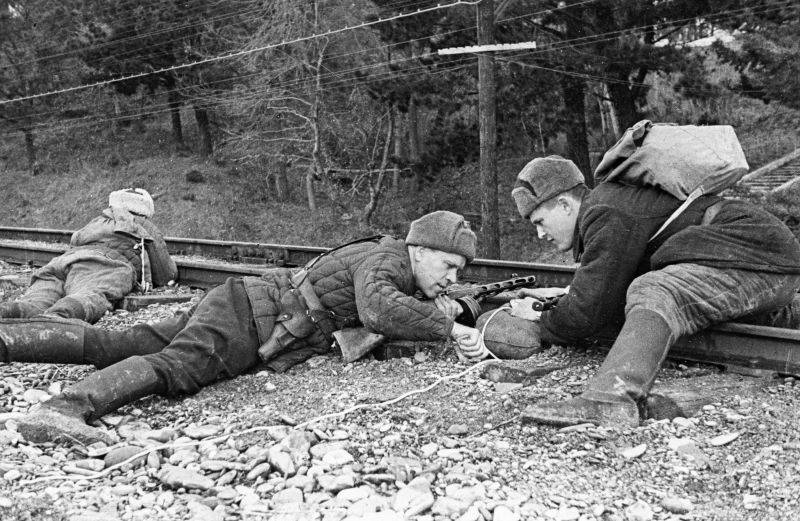
A group of Soviet partisan demolitionists from the 2nd Simferopol partisan detachment under the command of Kh. K. Chussi lays explosives on the railway. March 1943
The fighting continued in October 1943.
A total of 148 thousand rails were destroyed. The operation was stopped when the ammunition ran out.
The tasks of the operation were not completed in full, but the overall result was great. Enemy communications were subjected to massive attacks. There is a lack of rails. The Germans had to alter double-track sections of the track into single-track, which reduced the possibilities of the railway. Due to the lack of rails, the damaged ones were welded, transported from Poland, the Czech Republic and Germany.
At the same time, the repaired areas were subjected to new attacks. In general, the throughput of railways in the German rear decreased by 35-40% in September-October.
According to military researchers, the actions of the Soviet partisans during the two operations were more than 11 times more effective than the Luftwaffe raids that bombed the Soviet rear during the same period.
In addition, the partisan detachments not only destroyed the railways, their actions included a wide range of sabotage behind enemy lines. The partisans attacked enemy garrisons, important objects, destroyed small enemy units, operated on other communications, highways, etc. The transfer of German troops on the railways, evacuation and supply were significantly hampered.
Seeing the activity of the Soviet partisans, the resistance of local residents to the invaders intensified. More and more people joined the ranks of the underground and partisans, supported them.
Germany was losing the war.
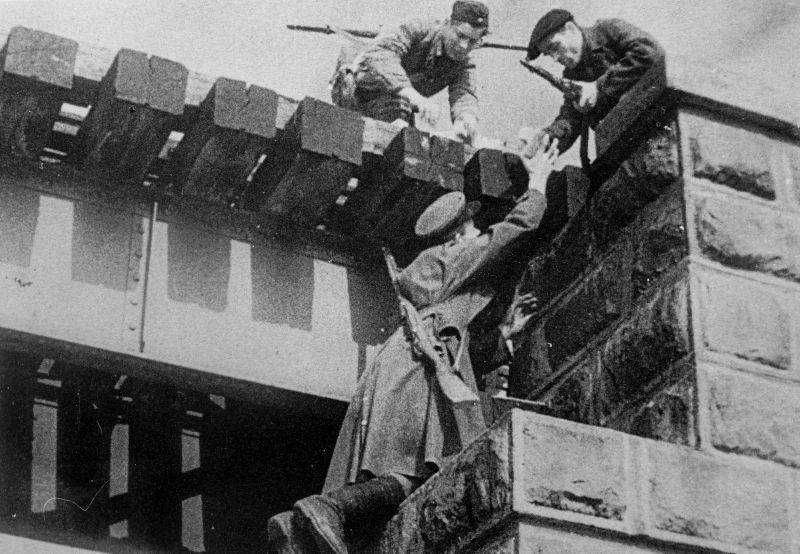
Soviet partisans are preparing to blow up the bridge
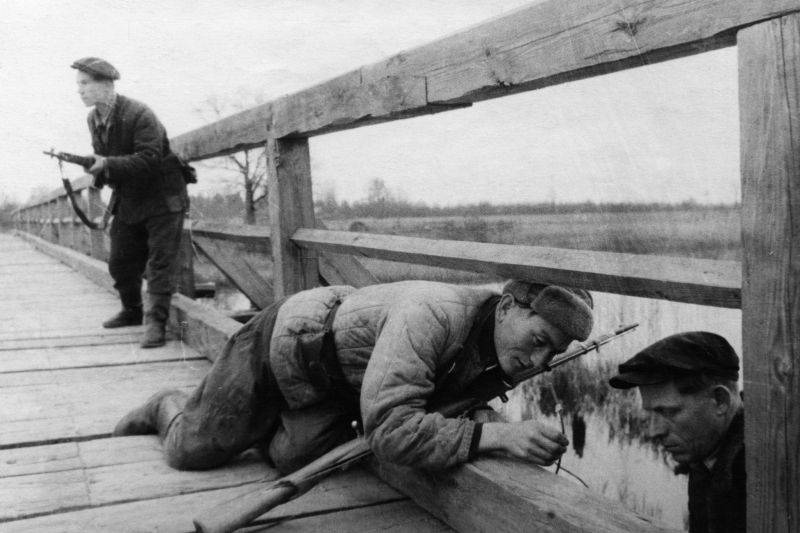
Partisans of the Voroshilov Detachment are preparing to blow up a wooden bridge over the river. 1943 g.
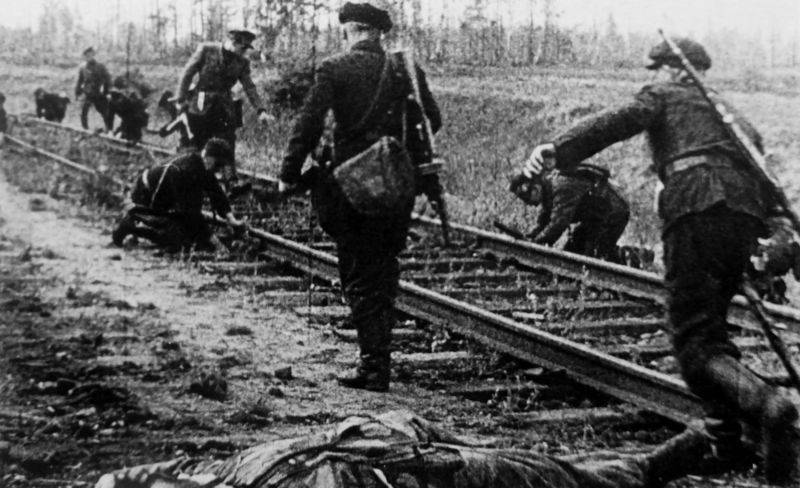
Soviet partisans are preparing to blow up a section of the railway. At the bottom of the photo is a killed soldier of the German army
Information